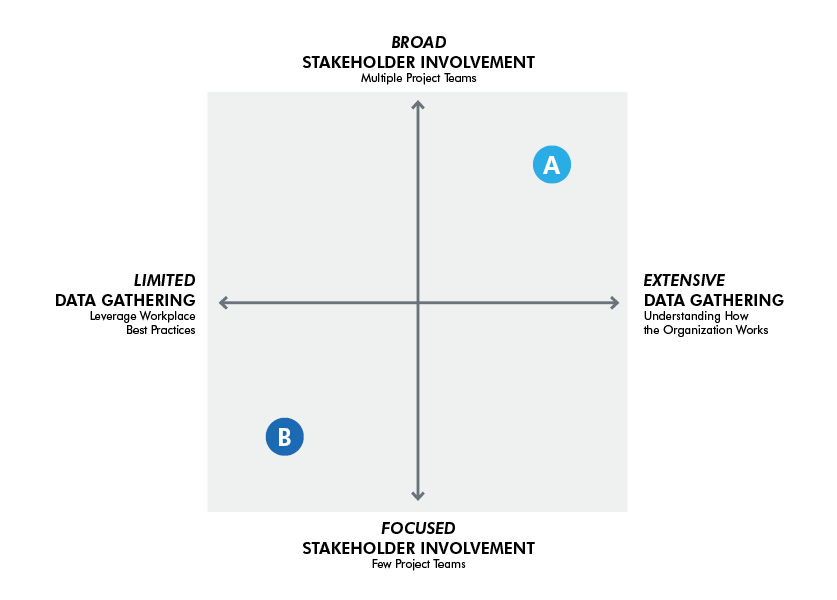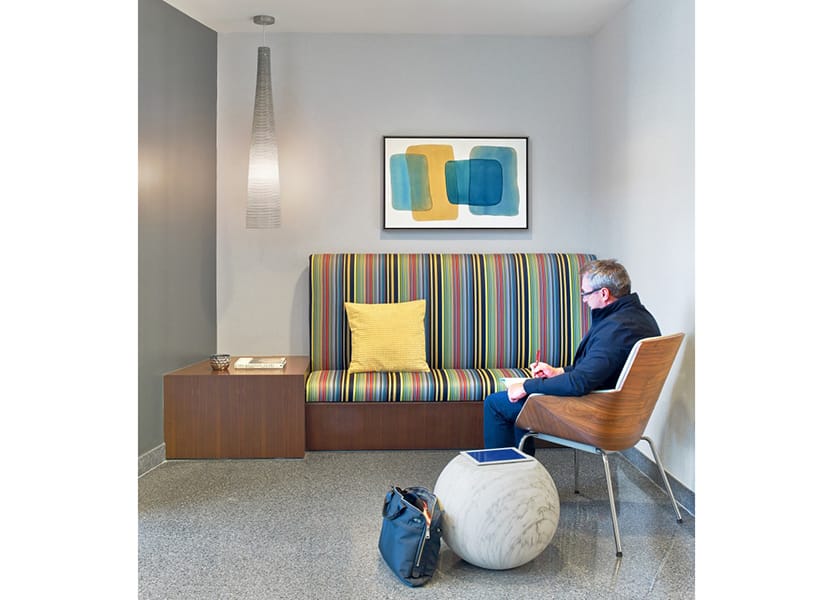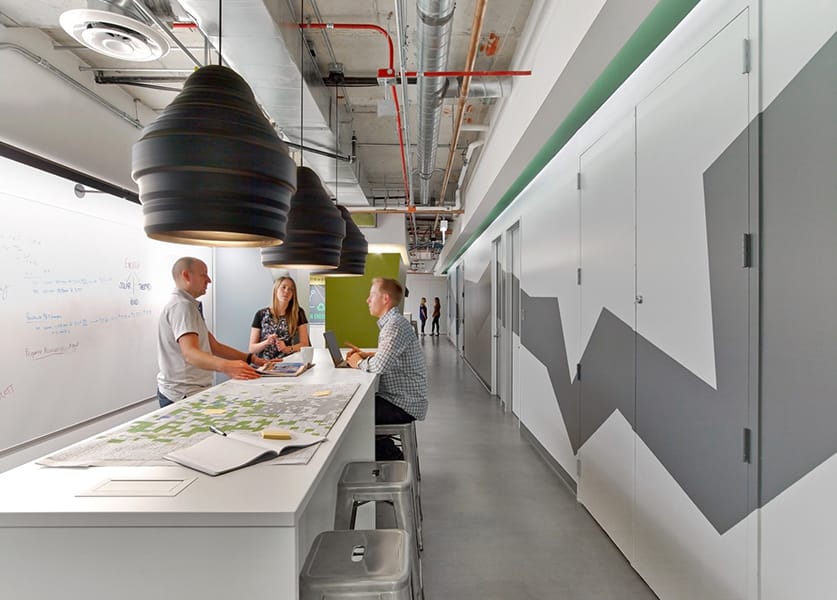By Tish Kruse | Senior Director of Workplace Strategy
November 19th, 2015
A Successful Workplace Strategy Starts With a Foundation in Qualitative and Quantitative Information.

One of my favorite parts of my job is helping clients determine how they should go about creating a workplace strategy for their organization: More or less, developing the “strategy” for the strategy.
There are two primary aspects of a workplace strategy’s strategy to consider when creating an approach that is individually tailored to an organization’s needs:
- What relevant data — if any — do we have to inform our workplace strategy?
- To what extent will the workforce be engaged in the development of the strategy?
The data we seek related to the first point will help us understand how the organization works and may work in the future. Identifying the information gap — how much data you already have and how much more you need to inform the workplace approach—is key.
For some companies an extensive amount of data gathering is needed; for others, not so much. If you fall under the former category, you aren’t alone. Many companies have a limited understanding of how all groups in their organization function, what is important to them, and how they see their business changing from a workplace point of view. Further data collection is a wise investment as a business case to support change built on a framework grounded in qualitative and quantitative information. Even if you feel you can provide data for your organization, there are often a variety of reasons to collect more.

Workforce Engagement in Strategy Development
The level of engagement can depend on the type of workplace study, the expected level of change (a lot or a little), and whether or not the initial study is confidential. With information from a core team, we can look at existing, relevant metrics and leverage best practices to provide clients with an initial direction for a workplace approach.
But more often than not, we take a deeper dive. Every organization is different and there can be risks from relying only on best practices. We want to understand the culture, the business drivers, how the organization functions, and worker patterns and preferences. Some of the ways we engage the workforce includes surveys, focus groups, and interviews with key stakeholders. It is not only a learning opportunity for IA. It is a way for clients to foster inclusiveness, by inviting the workforce to help define an environment that suits their needs.

High Volume Data Collection/Extensive Engagement
Client A knew they were about to undergo a big shift. They were operating in a work environment nearly 20 years old with a large percentage of private offices, and wanted a new workplace that aligned with how they work today and could accommodate change over time. We gathered extensive data sets to support our business case for change, and two tools provided us with some important perspective. We met with about 15 young employees to obtain their perspective on the workplace, what is important to them, and observed notable differences between their preferences and that of existing leadership. We also conducted an activity during their annual ”Bring your Child to Work Day” where we discovered what 5- to10-year-olds care about in the workplace. Their relevant topics were not dissimilar from what adults value in the office: Comfort, technology, physical activity, refresh time, and food.
Low Data Gathering/Limited Engagement
Client B was looking to renovate the highest performing call center in their portfolio. The first step was to identify where the opportunities for improvement were, define the corresponding cost, and then prioritize the proposed changes. We conducted a work session with the site leadership team to understand how the center worked and what was important to them. We also conducted a space assessment by comparing their space to call center best practices. From this data, we developed a set of opportunities and recommendations. The study was conducted in about eight weeks and established a foundation for a detailed program of space requirements that then launched the design phase of work with clearly identified goals.

Consider these two points when embarking on your strategy to create a workplace strategy. It will be the foundation you can build upon to take the next steps of your project.
